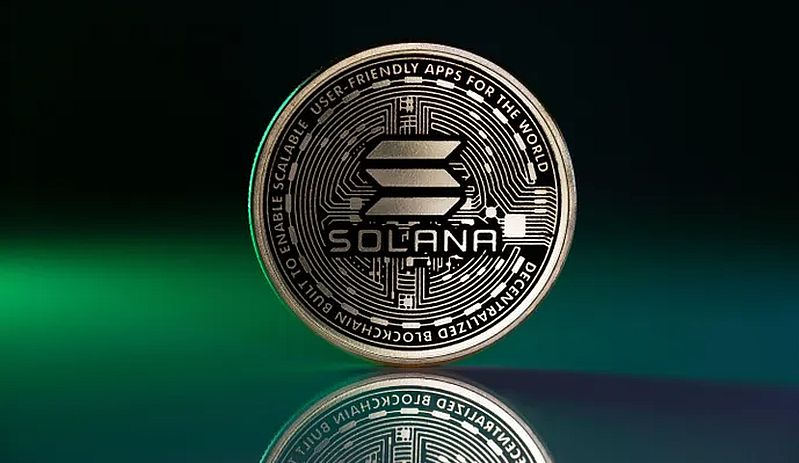How cryptocurrency works in simple terms.


Many have heard of crypto, but few have really understood how this system works. If you delve into the topic of how cryptocurrency works in simple terms: it underpins reliable systems, which is why its value increases. That is, it is quite difficult to draw a direct analogy with ordinary (classical) money.
When figuring out how cryptocurrency is structured, it is necessary to consider many accompanying nuances. Cryptocurrency, how it works in simple terms: to earn on coins, you need to understand the system, its features, and the processes that experienced investors use. Therefore, understanding how it works will not be enough.
What is cryptocurrency and how does it work?

It is worth starting with the fact that cryptocurrency is not just the familiar Bitcoin. There are many coins, and new ones appear every month. Undoubtedly, new coins lag behind Bitcoin, but it is not the only way to earn anymore.
So, cryptocurrency, what is it in simple terms and how does it work: cryptocurrency is not classical currency that can be called virtual or digital. In other words, it cannot be "touched". These coins exist only in the network. Unlike traditional money, which is the most popular in the world, cryptocurrency is not controlled by financial institutions or even the government of any country. Instead, its creation and operations are controlled using cryptography — complex mathematical algorithms that ensure security. In simple terms, these are coins that appear as a result of a functioning system (it guarantees security, and therefore it is already valuable).

When talking about cryptocurrencies, the first significant one can be considered Bitcoin. Its first appearances can be seen back in 2008. At that Time, a new vision of how coins could look emerged. Over time, crypto will become a breakthrough. The goal of Bitcoin was to create a decentralized system that would allow people to exchange money directly, without the involvement of banks and intermediaries. Since then, cryptocurrencies have gained widespread popularity, and today there are many different digital currencies, each with its features and goals. Today there are significantly more cryptocurrencies. Some of the coins are still "young and weak", while others are trying to catch up with Bitcoin like Ethereum. This entire process of competition also positively affects how effectively the system operates.
What are the features of cryptocurrencies?
Let's start with the fact that cryptocurrency, although it is called money, is very far from fiat (classical money) in its functionality. Primarily due to decentralization. Simply put, Bitcoin is not controlled by the banking system or the government. The same situation applies to other cryptocurrencies. In traditional financial systems, money is issued by central banks and controlled by government bodies. Cryptocurrency, on the contrary, has no central governing body. All transactions are conducted directly between users, and the system is controlled using blockchain technology (which we will discuss below).

Thanks to cryptocurrency, the anonymity that has long been lacking in traditional banking systems is also ensured. Although all transfers are recorded in a public ledger, information about who sent and who received the funds is usually concealed.
The world of cryptocurrency, especially in light of recent events in the economy, is safer. Cryptocurrencies are protected using various methods. This makes them resistant to hacks and counterfeiting. Furthermore, these coins have fewer restrictions. Cryptocurrencies can be sent and received anywhere in the world. This makes them convenient for international transfers.
The magic of cryptocurrency

Undoubtedly, this system has its significant drawbacks. Bitcoin, for example, has been hacked many times, which has shaken the entire system. Moreover, crypto coins can often depreciate, which affects earnings. So, problems do not always pass cryptocurrency by.
Returning to the reasons why crypto still remains afloat, it is based on several key principles: blockchain technology, cryptography, and consensus mechanisms. These systems are new, efficient, and completely different from standard (classical) ones.
The foundation of cryptocurrencies is blockchain technology. Blockchain is a type of database. It is also decentralized. The blockchain consists of blocks, and various information about transactions is stored on the blocks. The blockchain itself represents a chain of blocks, each containing data about transfers and linked to the previous block. One of the most popular cryptocurrencies, namely Bitcoin, is based on blockchains.
How blockchain works:
-
To start, a transaction is created. When someone sends cryptocurrency to another person, this transaction is recorded in a block and sent into the network.
-
Next, the transaction needs to be confirmed. For the transaction to be recognized as valid, it must be confirmed by network participants (usually miners). Miners check whether the sender has the necessary funds and whether they have tried to spend them twice.
-
At this stage, the blockchain is created. After confirmation, the transaction is added to the block, which is attached to the existing chain. This information remains in the blockchain forever and cannot be changed.
In the end, the entire transaction must be completed. Accordingly, the recipient can use the received funds.

In addition to blockchains, there are other, less known systems. They also work, and coins are issued based on them. However, they are still very far from Bitcoin or Ethereum.
A few words should be said about security. The main element that ensures the security of cryptocurrency is cryptography. In the process of transferring funds, complex mathematical algorithms are used, which encrypt transaction information. This makes cryptocurrencies very secure and resistant to fraud.
Read also
- Peanut cryptocurrency sharply increased in price — what does Elon Musk have to do with it
- What is the Solana cryptocurrency in simple terms
- What is cryptocurrency Ethereum in simple terms
- What will happen to cryptocurrency in 2025
- What Will Happen to Bitcoin in 2025
- The Best and Most Popular Altcoins: Top 10 Rating









